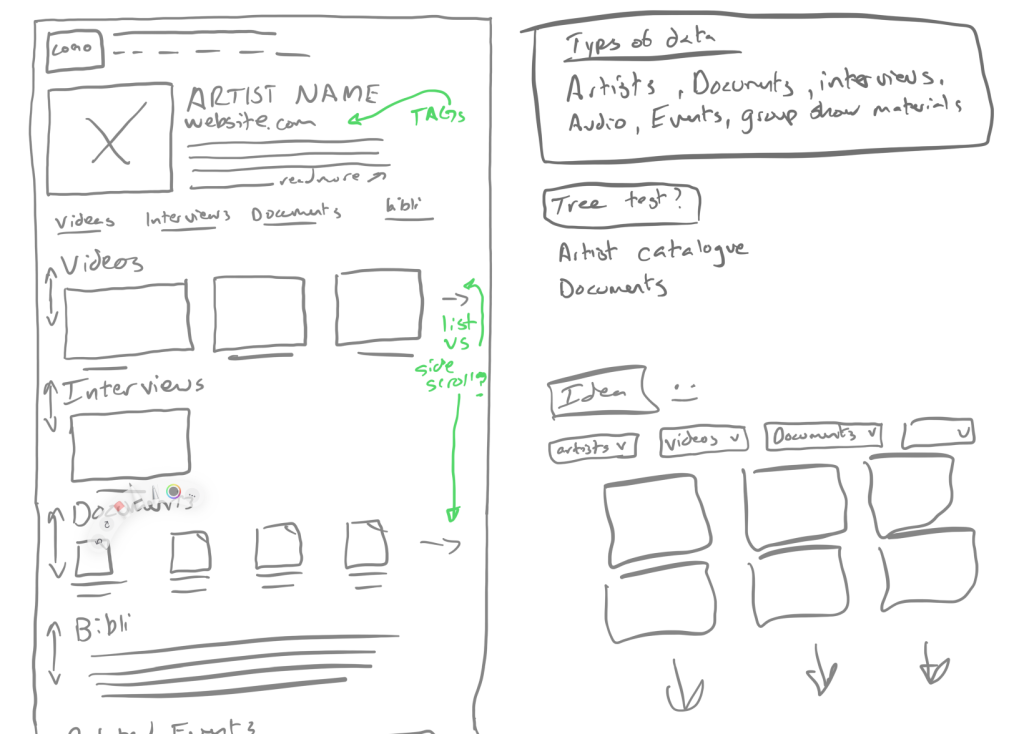
From Archive to Experience: Building an Educational Streaming Platform
Electronic Arts Intermix had a problem: Despite offering 5000+ historically significant videos to 50+ institutions, students weren’t engaging with their educational streaming service. For an institution that had partnered with seminal artists since the creation of the camcorder, this disconnect threatened not just their educational mission, but their growth for potential. As more universities seek streaming solutions for their arts programs, EAI’s platform was missing a crucial opportunity to expand its institutional reach.
Our Strategy for Boosting Engagement
Defining our Roadmap & Deliverables
Given our 6-week timeline and the possibility of resource constraints to implement, we needed a focused approach. As Pratt students, we had unique access to EAI’s target users, allowing us to develop strategic recommendations that could be implemented over time in stages.
We focused on delivering three key items:
- Key Insights to their student user base
- A presentation with recommendations and an overview of our research and findings
- A Prototype to help articulate our suggestions to EAI
Initial research revealed three core issues:
- complicated information architecture
- unclear site purpose
- poor video engagement
With a budget for 15 moderated interviews, we started with 2 baseline interviews to validate these observations.
We hypothesized that student engagement would increase through:
- Simplified content discovery paths
- Better context around artists and content
- Visual-forward artist pages
- Clear communication of the platform’s purpose

A Shift to Iterative Testing
We understood the issues we were trying to solve and the deliverables we would arrive at but we needed to brainstorm how we would arrive there. We knew we’d be shifting our testing to focus on concepts through comparing wireframes. We focused this round of testing (11 user interviews) around the following goals:
- Simplify how users navigate through the stream site experience.
- Information Architecture
- Mental Models
- Consistency
- Clearly and intentionally place the user within EAI’s Streaming Site
- Let them know how the site can do and how to do it
- Create a use case for the incredible content
- How can a user with little knowledge of video art discover content?
- How could a teacher instruct a student to interact with the archive?
- What features do students expect
- What features can we build that reflect the real world?
Mimicking the Real World: Conceptualizing User Collections

One of the more exciting aspects of the project, and something I personally focused on, was the new features we call “tools.” We conducted multiple brainstorm sessions on what to build and test for our iterative user interviews.
Inspiration strikes
Inspiration for our key feature came from my experience visiting NYPL’s special collections. A librarian had curated materials based on my research needs before I arrived. All of the materials were laid out neatly on a table for me to explore and better understand. This was exactly what our users needed from EAI’s streaming site. This led to developing “collections,” allowing users to create, view and share curated groups of videos and documents for research or educational purposes.
I immediately imagined multiple use cases for collections:
- Personal Use – such as a research paper.
- Educational Purposes – such as a teacher creating a collection and assigning it for homework.
- EAI Created Collections – displayed on the front page to suggest content to users.
Digging Deeper with Granular Testing
We laid out the groundwork, brainstormed new features through user testing and it was time to test our ideas. We decided the best path forward was to test low fidelity prototypes against each other. We changed our approach from the baseline testing. These tests involved showing the research participant multiple versions of a feature or aspect of the site to gain insight through comparison and participant observations. We tested in groupings of video player prototypes, collections prototypes and MVP prototypes, that consisted of the entire flow of what we considered the minimum viable product.
Connecting the Dots: Key Insights from User Testing
- Key insights across our testing revealed users needed:
- Clear visual communication over complex iconography
- Familiar organizational patterns
- Integrated but unobtrusive tools for academic work
- Better content discovery mechanisms
Delivering Actionable Recommendations
We finalized our research phase by conducting 2 usability tests. During our iterative testing phase, we constantly changed and iterated our ideas from our research findings. In these last usability tests, we gathered our best data-backed insights and tested them as a final site. We wanted to confirm our ideas with users before presenting them to EAI.
We made 3 Key Recommendations

1) Strengthen Branding & Mission Statement
Issue: Users do not understand the purpose or use of EAI’s streaming site.
We suggest to:
- Place users within the streaming site with clear labeling
- Describe the site’s purpose, features, and benefits upfront
- Showcase it’s features and functionality
2) Streamline Navigation and Interactions
Issue: 66% of participants found navigating the current streaming site confusing.
We suggest to:
- Redesign to emphasis visuals over text
- Implement a clear, consistent navigation structure across the site
- Provide context to guide users through the content discovery process

3) An Educational Toolkit
Students need ways to process, discover and purpose to interact with EAI’s content
We suggest to:
- Citations: Simplify referencing of video content
- Note-taking: Enable timestamped annotations
- Content Recommendations: Suggest related videos to drive discovery
- Collections: Allow users to curate and share custom content sets
- Discussion Boards: Facilitate collaborative learning and discourse
Looking Back and Moving Forward
While the team felt confident in our recommendations, we were ecstatic when EAI confirmed the value of our insights. Our presentation went well and spoke further about our findings and recommendations.
If I had more time to spend on the project, I would focus on a more polished hifi design and creating a persona from our findings that could act as a guide for their future decision making.